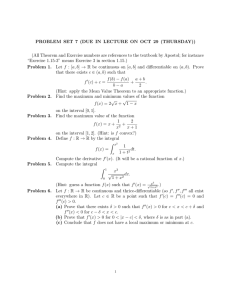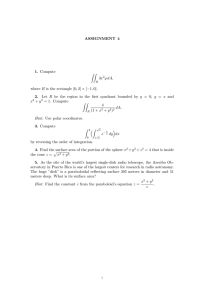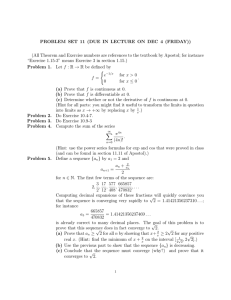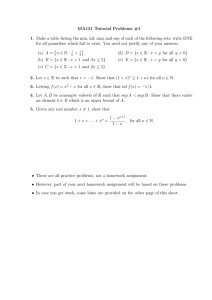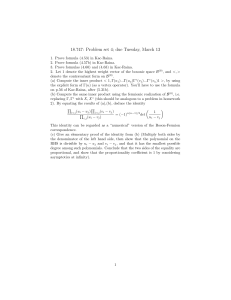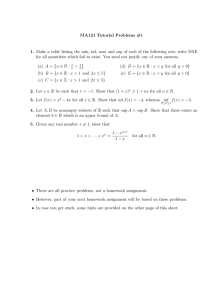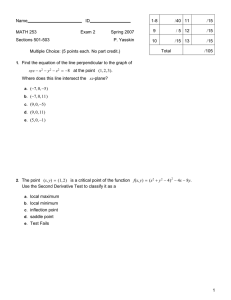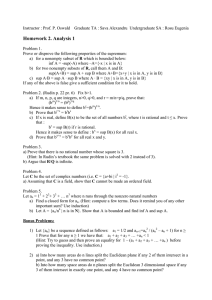PROBLEM SET 4 (DUE IN LECTURE ON OCT 9 (FRIDAY))
advertisement
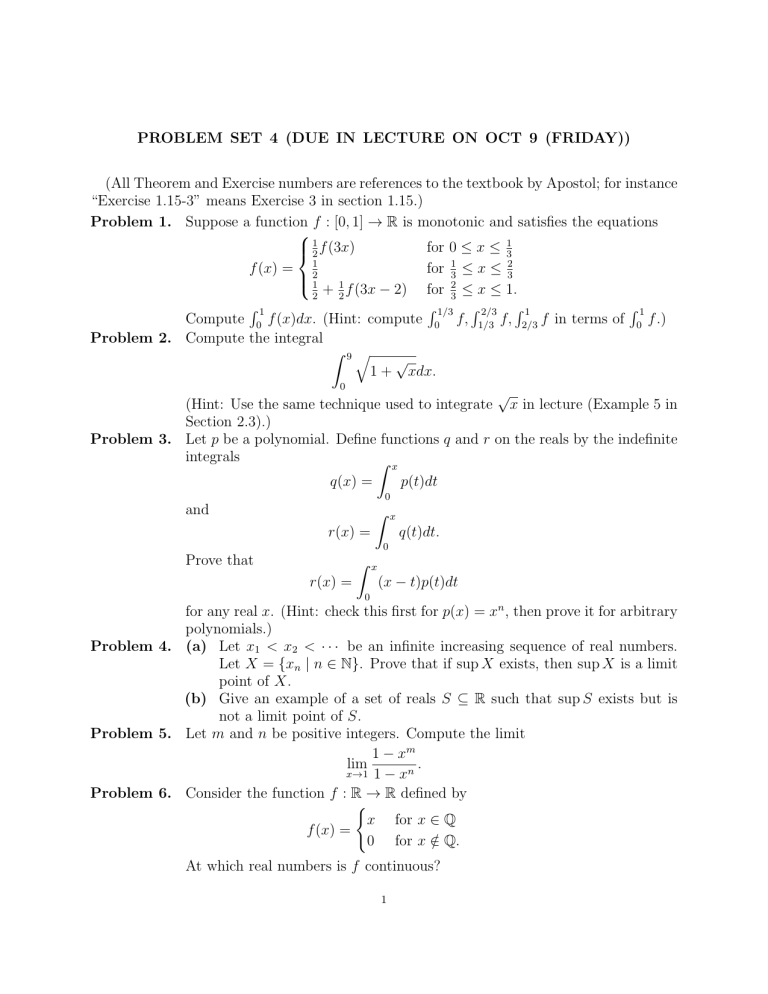
PROBLEM SET 4 (DUE IN LECTURE ON OCT 9 (FRIDAY))
(All Theorem and Exercise numbers are references to the textbook by Apostol; for instance
“Exercise 1.15-3” means Exercise 3 in section 1.15.)
Problem 1. Suppose a function f : [0, 1] → R is monotonic and satisfies the equations
1
for 0 ≤ x ≤ 31
2 f (3x)
f (x) = 12
for 13 ≤ x ≤ 23
1 + 1 f (3x − 2) for 2 ≤ x ≤ 1.
2
2
3
R1
R 1/3 R 2/3 R 1
R1
Compute 0 f (x)dx. (Hint: compute 0 f, 1/3 f, 2/3 f in terms of 0 f .)
Problem 2. Compute the integral
Z 9q
√
1 + xdx.
0
√
(Hint: Use the same technique used to integrate x in lecture (Example 5 in
Section 2.3).)
Problem 3. Let p be a polynomial. Define functions q and r on the reals by the indefinite
integrals
Z x
q(x) =
p(t)dt
0
and
Z
r(x) =
x
q(t)dt.
0
Prove that
Z
x
(x − t)p(t)dt
r(x) =
0
for any real x. (Hint: check this first for p(x) = xn , then prove it for arbitrary
polynomials.)
Problem 4. (a) Let x1 < x2 < · · · be an infinite increasing sequence of real numbers.
Let X = {xn | n ∈ N}. Prove that if sup X exists, then sup X is a limit
point of X.
(b) Give an example of a set of reals S ⊆ R such that sup S exists but is
not a limit point of S.
Problem 5. Let m and n be positive integers. Compute the limit
1 − xm
.
lim
x→1 1 − xn
Problem 6. Consider the function f : R → R defined by
(
x for x ∈ Q
f (x) =
0 for x ∈
/ Q.
At which real numbers is f continuous?
1
